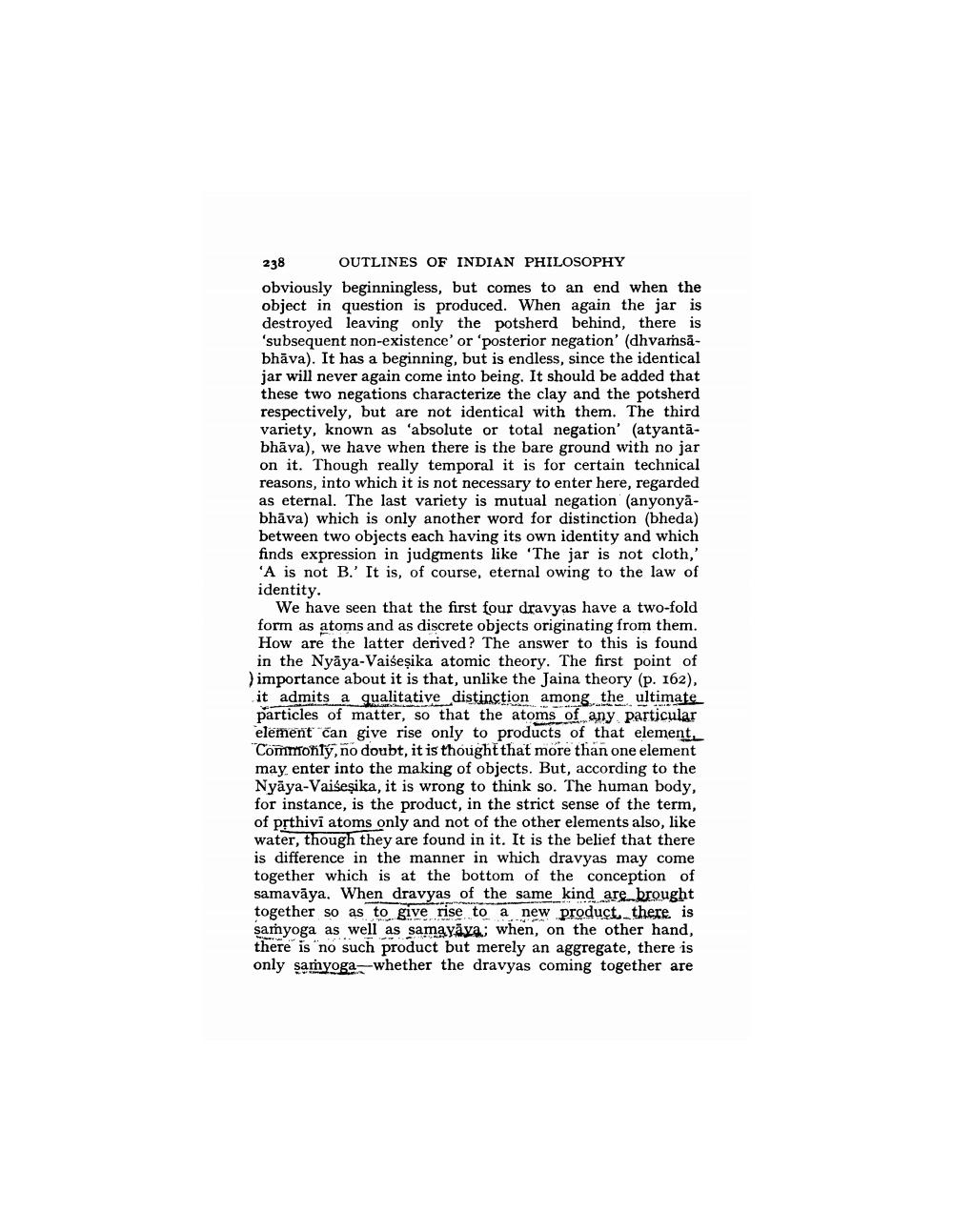________________
238 OUTLINES OF INDIAN PHILOSOPHY obviously beginningless, but comes to an end when the object in question is produced. When again the jar is destroyed leaving only the potsherd behind, there is 'subsequent non-existence' or 'posterior negation' (dhvarsābhāva). It has a beginning, but is endless, since the identical jar will never again come into being. It should be added that these two negations characterize the clay and the potsherd respectively, but are not identical with them. The third variety, known as 'absolute or total negation' (atyantābhāva), we have when there is the bare ground with no jar on it. Though really temporal it is for certain technical reasons, into which it is not necessary to enter here, regarded as eternal. The last variety is mutual negation (anyonyabhāva) which is only another word for distinction (bheda) between two objects each having its own identity and which finds expression in judgments like 'The jar is not cloth,' 'A is not B.' It is, of course, eternal owing to the law of identity.
We have seen that the first four dravyas have a two-fold form as atoms and as discrete objects originating from them. How are the latter derived? The answer to this is found in the Nyāya-Vaiseșika atomic theory. The first point of ) importance about it is that, unlike the Jaina theory (p. 162), it admits a qualitative distinction among the ultimate particles of matter, so that the atoms of any particular element can give rise only to products of that element. "Commonly, no doubt, it is thought that more than one element may enter into the making of objects. But, according to the Nyāya-Vaiseşika, it is wrong to think so. The human body, for instance, is the product, in the strict sense of the term, of prthivi atoms only and not of the other elements also, like water, though they are found in it. It is the belief that there is difference in the manner in which dravyas may come together which is at the bottom of the conception of samavāya, When dravyas of the same kind are brought together so as to give rise to a new product. there is samyoga as well as samayāya, when, on the other hand, there is no such product but merely an aggregate, there is only samyoga--whether the dravyas coming together are




